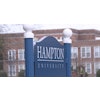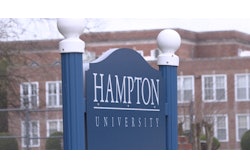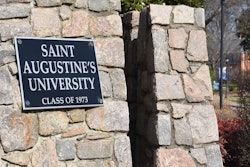Diversity: Corporate America and Higher Education
Diversity leaders at some of corporate America’s most prominent organizations share their stories and hopes in the related areas of cultural diversity and inclusiveness.
By Saira Moini
Recipe for Recruitment
Dr. Rohini Anand
Senior Vice President and Global Chief Diversity Officer, Sodexho USA
When Dr. Rohini Anand speaks about diversity and inclusiveness, Sodexho USA’s CEO and executive leadership stop and listen. So do senior leaders at other companies, including some of Sodexho’s own clients.
Under the leadership of Anand, Sodexho’s senior vice president and global chief diversity officer, the nation’s largest food and facilities-management services company has won a reputation — and multiple accolades — as an innovator.
The recipe for Sodexho’s success in recruiting and retaining a diverse staff, says Anand, includes the following ingredients: employee network groups for each minority population, as well as diversity councils across service lines; mentoring initiatives to develop upcoming groups of managers and retain talent at all levels; and accountability for 16,000 managers via a diversity scorecard directly linked to performance bonuses.
In conversation, Anand frequently mentions the “importance of developing the pipeline” of future employees. “As the nation’s labor pool shrinks, diversity-elite companies will win the talent,” she says. “For Sodexho, diversity and inclusiveness are key to our growth — they’re a competitive advantage.”
Anand brings a global perspective to her position, having first completed college in India and then gone on to earn her master’s degree at Ohio University and her doctorate at the University of Michigan.
While the U.S. food service and hospitality industry has at some levels traditionally been multicultural, she notes, members of minority groups have not had ready access to professional or managerial career paths. As part of its goal of inclusiveness, Sodexho reaches out to groups such as the National Association of Black MBAs and Minorities in Hospitality, bringing in interns and often recruiting directly through the groups.
“Despite all that we’ve achieved at Sodexho, there’s lots of room for growth,” she says. “Involving every single manager is a long-term process. And, as we’re a global company, we must address these issues globally, too.”
Seeking — and Finding — the Best
Edward Bullock
Vice President, Diversity, L’Oreal USA
At this year’s career fair of the National Black MBA Association, Edward Bullock is both manning L’Oreal USA’s booth and making the rounds, chatting with university administrators and scouting out first-year MBA students for paid internships at his company. Accompanying him are representatives from the global cosmetic conglomerate’s 18 brands, recruiting MBA graduates for various marketing positions.
That L’Oreal sends its vice president for diversity, along with a large entourage, to such a networking event gives a clue to the company’s enormous and internationally recognized success in the areas of diversity and — what Bullock calls “its twin sister” — inclusion. Eighteen percent of its U.S. managers are people of color; half of the MBAs recruited annually are of diverse backgrounds.
“Our philosophy is that innovative teams develop innovative products,” says Bullock. “Teams composed of people of different backgrounds foster a creative atmosphere. So diversity is a business imperative. But it’s not enough for a company to bring diverse employees to the party — you have to also include them, ask them to dance! We offer fast-track leadership initiatives; we engage our hires in profitability and decision-making.”
A 22-year veteran of the company, and also a church deacon, Bullock has in the past three years helped L’Oreal make major strides.
“We’re now aggressively fishing in ponds such as historically Black colleges and universities, INROADS [an internship program for minority undergraduates] and minority-owned search firms,” he says. “In addition to our many internship offerings, our scholarship program with HBCUs helps support a selected student through four years of college. Our mentoring program in New York City connects young women with role models in their chosen fields.”
Bullock detects parallel signs of change on campuses: “Already, I see some colleges with positions for diversity officers, and I predict more of the same in the years to come. That’s good.”
A Passion for Inclusion
Candi Castleberry-Singleton
Vice President, Global Inclusion and Diversity, Motorola Inc.
As a college student at the University of California, Berkeley, Candi Castleberry-Singleton switched her major from engineering to liberal arts. Today, as the vice president of global inclusion and diversity at Motorola Inc., she wishes that she’d been encouraged to give engineering another shot.
Her choice of college major clearly hasn’t hindered her success as a corporate executive in the world of technology and telecommunications. It also hasn’t stymied her educational achievements, which include an MBA from Pepperdine University and a diploma from the Stanford Graduate School of Business.
But it has convinced her that schools and colleges play a key role in increasing the inclusiveness of corporate America: It is their duty to ignite the interest of women and minority students “in math and science — in understanding the science behind the technology they use every day. We need to help them think about what drives their mobile phone or digital music player,” says Castleberry-Singleton.
Female and minority high school and college students must be encouraged to study and excel in math and science, she says.
Only then can they see the variety of career paths available in science and engineering. Motorola has established a foundation to support that goal. In 2007, the company’s internal business councils/affinity groups will each adopt a college and offer support through scholarships, executive lectures on campus and more.
Castleberry-Singleton previously worked for Sun Microsystems, where she created a model that made inclusive behavior and cultural acumen the responsibility of every employee and department, not just human resources. During her first few months at Motorola, she has built bridges between the existing business councils and the company’s managers and vice presidents, getting the latter to share ownership of diversity and inclusion goals.
Says Castleberry-Singleton of her work: “I plan to always be on this mission.”
Making the Business Case for Diversity
F. David Coleman
General Manager, Corporate Diversity,
United States Steel Corporation
A retired U.S.
Army Lt. Col., David Coleman is now leading the good fight being waged by the United States Steel Corporation — in his words: “Winning the battle for talent, as the pool grows increasingly diverse.”
Appointed the company’s first general manager of corporate diversity in March, Coleman draws upon 33 years of human resources management experience — in the military and corporate worlds — to carry out his charge.
In recent months, he has “been on a personal road show, visiting steel manufacturing facilities to talk with managers about the business case for recruiting and retaining a diverse work force,” essential to replacing the 40 percent of workers due to retire by 2010.
Chief among Coleman and the company’s accomplishments: A four-day diversity awareness and skills training workshop to be held this fall for 100 senior managers. He has also taken a personal interest in selecting recruiters dispatched to career fairs sponsored, for example, by societies of Black, Hispanic and women engineers.
Another win: Assuring funding for additional student interns and co-ops, with the goal of ultimately recruiting the best of them. Between now and mid-2007, Coleman says the company will hire 500 new employees, mostly engineers but also business and accounting people, into both entry-level and lateral management positions. He studied engineering at the United States Military Academy at West Point and later earned a master’s degree in operations research from Case Western Reserve University.
“We’re actively expanding our relationships with colleges and universities, looking for opportunities to meet with deans and chancellors, with professors, when we’re on campus,” says Coleman. “We ask: ‘Let us be involved in the educational process.’”
Coleman encourages academia to introduce students to concepts in management and leadership — to prepare young people for careers at companies like United States Steel, which, he says, “offer opportunities to lead people and be in charge.”
© Copyright 2005 by DiverseEducation.com















